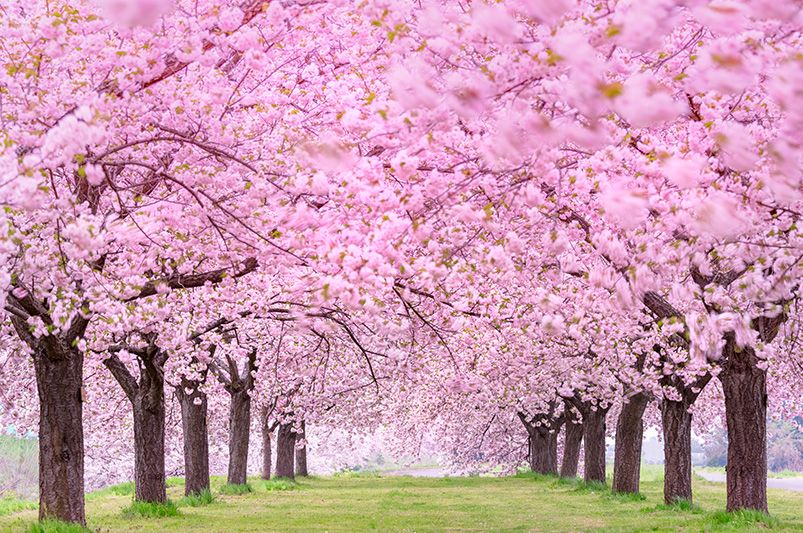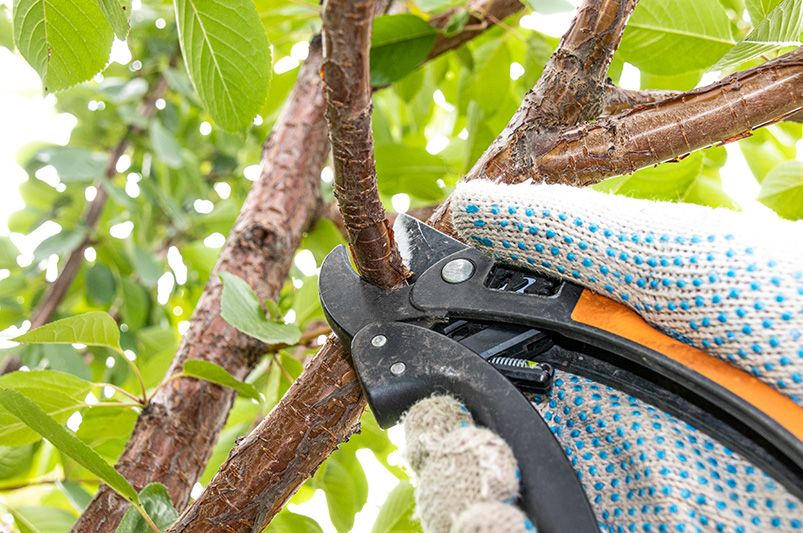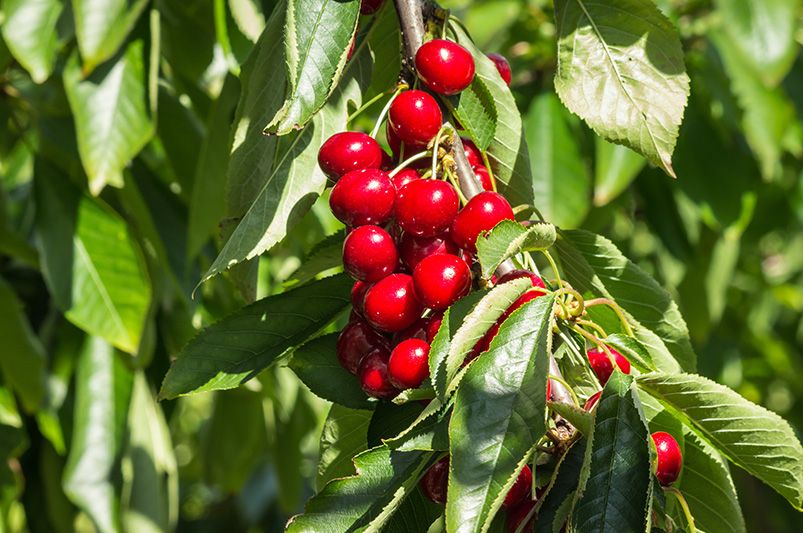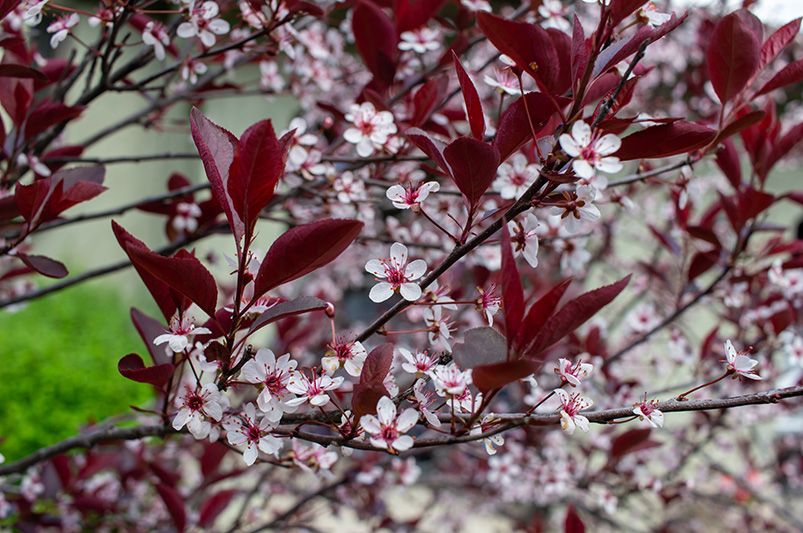
Cherry Trees: The Loveliest Choice for Your Garden
Published: 14/06/2024 | Updated: 14/06/2024
Flowering cherry trees make some of the loveliest flowering and fruit trees you could grow in your garden. On the ornamental side, finding other trees as stunning is hard. But you also get great fruit when you grow flowering cherry trees, which you snack on fresh or make jams for healthy and delicious breakfasts for the entire year.


This guide will walk you through what it takes to grow flowering cherry trees, how to help them thrive, and the best varieties you should start with.
Everything You Need to Know And The Best Varieties
Cherry trees have a rich history in the United States and abroad. People have historically bred and developed cherry trees for their ornamental values and stunning blossoms and for treasuring their fruit.
Japan, for example, has been breeding ornamental cherry trees for centuries and is a big celebration of cherry trees' beauty. To this day, the USA celebrates cherry trees' beauty in the annual National Cherry Blossom Festival.
Cherry trees belong to the genus Prunus, which includes other fruit-bearing trees like plums, peaches, and apricots. We categorize cherry trees into two primary types: sweet cherry trees and sour cherry trees.
Both sweet and sour cherries have culinary value. Sweet cherries are eaten fresh, used in cooking, or used in cake decorations. Sour cherries make better jams and preserves and are used in baking, like cherry pies. Depending on taste, you can make a great tart cherry with either sour or sweet cherries.
With differences in varieties, cherry trees are deciduous and usually grow between 20 and 30 feet tall. They have a slightly smaller spread, an average of 15-20 feet wide. We'll discuss the conditions needed for cherry trees to grow and the type of care you should provide.
Growing Conditions and Care
Cherry trees grow under particular conditions. Before you make purchases, you should know the key requirements and make sure they match your landscape.
Hardiness Zones
Cherry trees aren't fully monolith, and there are variations in each cultivar. However, sweet cherry trees grow best in hardiness zones 5-8, while sour cherry trees are more cold-hardy and can grow in zones 4-7. Local conditions and microclimates can also affect the hardiness range for cherry trees.
Sunlight
Cherry trees need total sun exposure to grow and produce fruit. Experts recommend at least 6 hours of direct sunlight daily for cherry trees to develop and produce fruit. Ensure minimum shading from other trees or structures around your flowering cherry tree.
Soil Conditions
Cherry trees do best in well-drained soil with an average pH of 6.0-7.0. You can alter your soil's pH with homemade recipes. Make sure your soil is rich in organic matter before planting cherry trees.
Spacing
Well, spacing is essential for cherry trees. Of course, the exact spacing will depend on the precise variety and its expected mature size, but you should ensure your landscape is big enough and the trees you already have will not crowd over the cherry trees. The average spacing expected would be around 35-40 feet for adequate air circulation. Dwarf varieties are another matter; they need way less space, with an average of 5-10 feet.
Planting Time
Like most fruit trees, cherry trees should be planted in the spring so that they have the entire growing season to establish. Cherry trees normally need 3-5 years before they flower and produce fruit, but how well the first season goes will have a long-term effect on their blossoms and the quality of the fruit.
Cherry trees usually flower in early to late spring. The cherry season for harvest is summer. You should expect to harvest cherries by late August.
Plant seedlings or young trees at a depth that matches the level they were previously grown to avoid burying the graft union.
Watering
Cherry trees need regular watering, especially during the first few years when establishing roots. It would help if you watered young trees twice a week, and mature trees should receive 1-2 inches of water weekly.

Fertilizing
Cherry trees rarely need heavy fertilization but can benefit from a balanced, slow-release fertilizer in early spring. The better the soil and spacing, the less fertilizer they'll need.
Avoid heavy fertilizing, especially nitrogen ones, as they can lead to excessive leaf growth and affect the fruit and the strength of the branches.
Pruning
Annual pruning in late winter or early spring can help promote healthy growth and fruit production. However, cherry trees usually need less pruning than most other fruit trees, as they don't need thinking to produce better fruit.

Pest and Disease Control
Regular monitoring is essential for limiting pest and disease damage. Organic sprays or traps can manage insect pests like aphids and fruit flies, while proper watering, pruning, and planting disease-resistant varieties can help mitigate bacterial and fungal diseases.
Cherry Trees Recommended

Stella Cherry Tree (Prunus avium 'Stella')
Stella Cherry is a self-pollinating sweet cherry tree variety known for its large, dark red fruit with a rich flavor. The tree produces abundant crops and is a compact grower, making it suitable for smaller gardens or containers[1].
The Stella cherry tree is a deciduous tree that typically grows to a height of 20-30 feet with a spread of about 15 feet. The flowering cherry tree is vase-shaped and produces showy white flowers early in the spring. These long-lasting blossoms are among the first to appear.
Stella cherry trees are reliable for fruit production. They're self-pollinating and produce large, dark red fruit that is sweet. It has been reported that Stella cherry trees frequently bear fruit in moderate to heavy crops early in the season. The fruiting period of Stella cherry trees can be as soon as one to four years after planting, making them a relatively fast fruit-producing tree.
Stella cherry trees thrive in various regions across the country because they are suitable for hardiness zones 5-9.

Purpleleaf Sand Cherry
Scientifically known as Prunus x cistena, the Purpleleaf Sand Cherry is a deciduous shrub valued for its deep purple-red leaves, which have a strong visual effect in any garden, and light pink cherry blossoms. While its fruit isn't the best among sour cherry trees, it has a strong ornamental value, and its dark purple or black color perfectly complements the stunning foliage. Landscapers commonly use the Purpleleaf Sand Cherry as a specimen plant.
Purple leaf sand cherry plants thrive in well-drained soil and require adequate sunlight. They can also tolerate different weather conditions and be cultivated in USDA hardiness zones 3 through 8. The plant typically grows 6-10 feet in height and 5-8 feet in width, with an upright growth habit.
This guide offers you all the help you need to grow cherry trees. With the information here, you'll know which flowering cherry tree is best for your landscape and how to take perfect care of it. With the compact varieties we recommended, you could opt for both sweet cherry trees and sour cherry trees to get a variety in both your landscape and kitchen.
Before purchasing your favorite cherry tree from our Shrubhub shop, ensure your landscape design is up to date. If it's not, then you're here at the right time! We offer a 70% discount on all our landscape design services, including 3D and 2D designs.


